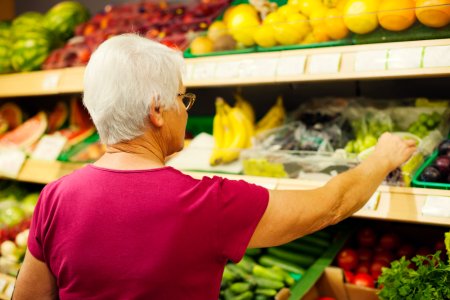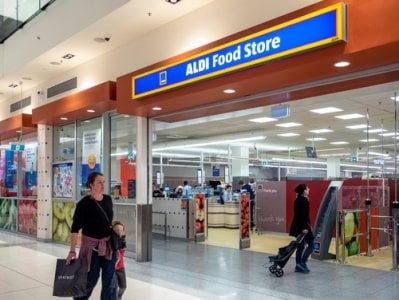‘This is a trick’: Shoppers speak up on how supermarkets are quietly raising prices and shrinking products
By
Seia Ibanez
- Replies 20
In the face of a cost-of-living crisis and skyrocketing grocery prices, many have to cut back on their food consumption to keep up with their bills.
The Australian Competition and Consumer Commission (ACCC) has been tasked with conducting an inquiry into supermarkets, and the responses from the public have been overwhelming.
Out of 170 responses to a Guardian Australia callout, there was widespread frustration at unexplained price hikes, a growing distrust towards the supermarket giants, and a shift towards shopping at ALDI and local markets.
Here's what the readers had to say:
One shopper from Launceston shared their experience buying baby spinach leaves in bags.
According to them, the bags used to be 500g and cost $5. However, they noticed that they were running out earlier without changing their eating habits.
‘Guess what? 500g is now 280g, and the price is still $5…We buy now from farmers’ market and at the farm gate or door,’ they said.
Another from Melbourne noticed a significant price jump in Caffé Aurora Medaglia D’Oro 1kg coffee beans at Coles. The price jumped from $18 per kilogram to $32 per kilogram about a year ago after being around $18 for many years.
The price stayed high for a couple of months and was then 'discounted' to the 'down down' price of $19, quoting the 'was' as $32.
‘Went back to $19 a couple of weeks ago (so I have stocked up) but fully expect it to revert,’ they said.
‘On the surface, this feels like an artificial price increase that just sets up for what looks like a huge price drop when in fact, it is just back to the original price.’
Michelle, a shopper from Queensland, has been buying the same items week after week and has seen increases each week.
‘Mainland cheese slices were $9.50, now they are $11. What annoys me the most is Woolworths puts a sticker saying “were $12”, “price dropped to $11”,’ she said.
‘They were never $12…Cadbury chocolate was $6 last week. Now $7. John West salmon slices were $3.95, slowly increased to $4.90 per tin.’
‘Coles use the Yellow/Red cut price stickers as a weapon to deliberately confuse,’ said Bill Leigh from West Pennant Hills.
‘They fail to stock marked special bins whilst offering expensive options [on] either side. They cover whole areas of goods in special stickers but offer minimal price reductions, creating an image of value but not delivering value.’
Over in Batemans Bay, Bill shared that a pack of Toby’s 1kg oats was $3.50 prior to the pandemic, and now it's $6.50.
‘I wait until it is on special for as little as $3.50 and buy ten boxes at a time…[I am] not eating oats as regularly, and [am] always looking for good breakfast alternatives,’ he said.
An anonymous reader from NSW shared that a pack of two turkey drumsticks in Woolworths were $8 in October/November, then two weeks before Christmas they went up to $25. After Christmas, they went down to $15.
They added that SC Johnson’s Off! insect repellent was $6.50 and is now $10.
‘I buy less and eat less, so I can afford to pay my bills,’ they said.
Luke from Canberra noticed that branded cereals have gone way up.
‘Sanitarium Weet-Bix used to be $5 for a 1.2kg box, and then overnight at every Coles and Woolworths, it went up to $6,’ he said.
‘Other cereals such as Nutri-Grain and Uncle Toby’s brands also went up in price by very high amounts. They are over $10 for a box of cereal! I simply can’t buy branded cereal any more unless they are on half-price specials.’
‘My grocery bill has almost doubled over the last 18 months,’ said an anonymous reader from Sunrise Beach.
‘The last bill at Coles was fruit and vegetables, some grocery and laundry items, no protein, $189!’
‘I’m single, so only one mouth to feed, and it doesn’t include the cat, whose food has also increased about 25 per cent over that time.’
Graeme from Mount Hawthorn shared that for 25 years, he has done the weekly grocery shop for his family of five at their local Woolworths.
‘Prior to the jump in inflation, my shop was always between $250-$300. It almost overnight went to $400-$450,’ he said.
After experiencing this and seeing Woolworths’ half-yearly results, he decided to try ALDI for the first time, which was an extra 5-10 minute drive away.
‘My shopping has returned to $250-$300 each week, saving me ~$150 every week…Woolies can get stuffed!’
Jeffrey from Willoughby noticed that package sizes are decreasing.
‘Cornflakes down from 450g at $5.45 to 380g at $5, but the price fall isn’t as great as the contents’ weight decrease, resulting in a per gram real price increase,’ he said.
‘I’ve seen pineapple juice do the same thing. Contents drop from 500ml at $2.85 to 400ml at $2.80, but the price drop is only a small fraction of the volume drop.’
‘This is a regular trick. I’m old enough to remember when there were 12 biscuits in a Tim Tam packet. I think there are only nine now. But the price has rocketed up…[I am] purchasing less. I’ll keep my money.’
This comes after a recent analysis revealed an increase in the prices of common pantry staples.
According to a report by Compare the Market, shoppers now pay up to twice as much as they were three years ago for everyday items, including much-needed pantry staples. You can read more about the story here.

What are your thoughts on this issue? Have you noticed prices rising or products shrinking at your local supermarket? Share your thoughts in the comments below.
The Australian Competition and Consumer Commission (ACCC) has been tasked with conducting an inquiry into supermarkets, and the responses from the public have been overwhelming.
Out of 170 responses to a Guardian Australia callout, there was widespread frustration at unexplained price hikes, a growing distrust towards the supermarket giants, and a shift towards shopping at ALDI and local markets.
Here's what the readers had to say:
One shopper from Launceston shared their experience buying baby spinach leaves in bags.
According to them, the bags used to be 500g and cost $5. However, they noticed that they were running out earlier without changing their eating habits.
‘Guess what? 500g is now 280g, and the price is still $5…We buy now from farmers’ market and at the farm gate or door,’ they said.
Another from Melbourne noticed a significant price jump in Caffé Aurora Medaglia D’Oro 1kg coffee beans at Coles. The price jumped from $18 per kilogram to $32 per kilogram about a year ago after being around $18 for many years.
The price stayed high for a couple of months and was then 'discounted' to the 'down down' price of $19, quoting the 'was' as $32.
‘Went back to $19 a couple of weeks ago (so I have stocked up) but fully expect it to revert,’ they said.
‘On the surface, this feels like an artificial price increase that just sets up for what looks like a huge price drop when in fact, it is just back to the original price.’
Michelle, a shopper from Queensland, has been buying the same items week after week and has seen increases each week.
‘Mainland cheese slices were $9.50, now they are $11. What annoys me the most is Woolworths puts a sticker saying “were $12”, “price dropped to $11”,’ she said.
‘They were never $12…Cadbury chocolate was $6 last week. Now $7. John West salmon slices were $3.95, slowly increased to $4.90 per tin.’
‘Coles use the Yellow/Red cut price stickers as a weapon to deliberately confuse,’ said Bill Leigh from West Pennant Hills.
‘They fail to stock marked special bins whilst offering expensive options [on] either side. They cover whole areas of goods in special stickers but offer minimal price reductions, creating an image of value but not delivering value.’
Over in Batemans Bay, Bill shared that a pack of Toby’s 1kg oats was $3.50 prior to the pandemic, and now it's $6.50.
‘I wait until it is on special for as little as $3.50 and buy ten boxes at a time…[I am] not eating oats as regularly, and [am] always looking for good breakfast alternatives,’ he said.
An anonymous reader from NSW shared that a pack of two turkey drumsticks in Woolworths were $8 in October/November, then two weeks before Christmas they went up to $25. After Christmas, they went down to $15.
They added that SC Johnson’s Off! insect repellent was $6.50 and is now $10.
‘I buy less and eat less, so I can afford to pay my bills,’ they said.
Luke from Canberra noticed that branded cereals have gone way up.
‘Sanitarium Weet-Bix used to be $5 for a 1.2kg box, and then overnight at every Coles and Woolworths, it went up to $6,’ he said.
‘Other cereals such as Nutri-Grain and Uncle Toby’s brands also went up in price by very high amounts. They are over $10 for a box of cereal! I simply can’t buy branded cereal any more unless they are on half-price specials.’
‘My grocery bill has almost doubled over the last 18 months,’ said an anonymous reader from Sunrise Beach.
‘The last bill at Coles was fruit and vegetables, some grocery and laundry items, no protein, $189!’
‘I’m single, so only one mouth to feed, and it doesn’t include the cat, whose food has also increased about 25 per cent over that time.’
Graeme from Mount Hawthorn shared that for 25 years, he has done the weekly grocery shop for his family of five at their local Woolworths.
‘Prior to the jump in inflation, my shop was always between $250-$300. It almost overnight went to $400-$450,’ he said.
After experiencing this and seeing Woolworths’ half-yearly results, he decided to try ALDI for the first time, which was an extra 5-10 minute drive away.
‘My shopping has returned to $250-$300 each week, saving me ~$150 every week…Woolies can get stuffed!’
Jeffrey from Willoughby noticed that package sizes are decreasing.
‘Cornflakes down from 450g at $5.45 to 380g at $5, but the price fall isn’t as great as the contents’ weight decrease, resulting in a per gram real price increase,’ he said.
‘I’ve seen pineapple juice do the same thing. Contents drop from 500ml at $2.85 to 400ml at $2.80, but the price drop is only a small fraction of the volume drop.’
‘This is a regular trick. I’m old enough to remember when there were 12 biscuits in a Tim Tam packet. I think there are only nine now. But the price has rocketed up…[I am] purchasing less. I’ll keep my money.’
This comes after a recent analysis revealed an increase in the prices of common pantry staples.
According to a report by Compare the Market, shoppers now pay up to twice as much as they were three years ago for everyday items, including much-needed pantry staples. You can read more about the story here.
Key Takeaways
- Consumers are expressing frustration and distrust towards supermarkets due to unexplained price rises and shrinking product sizes.
- Many shoppers have noticed deceptive pricing strategies, such as artificial discounts and confusing special offers.
- The rising cost of groceries is forcing Australians to alter their consumption habits, with some buying less or seeking alternatives like ALDI and local markets.
- There is a call for the supermarket inquiry to address the issues of pricing and to provide positive outcomes for consumers and farmers.
Last edited:









